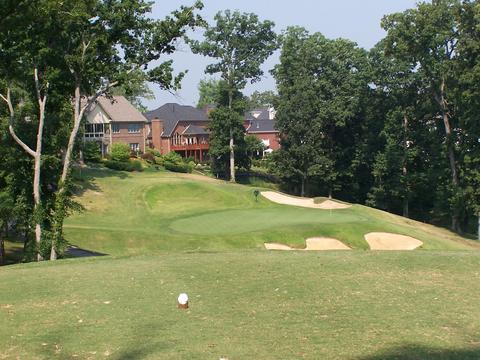
The lot prices adjacent to the holes at the Avalon Golf Club outside Knoxville, TN, were so reasonably priced that temptation almost got the better of me.
I have been oh so tempted to invest in residential real estate over the years. I recall a piece of property about two stories above one of the fairways at the Avalon Golf Club near Knoxville, TN. It appealed to me on a number of levels -- great views of the course and out to the hills beyond; 15 minutes from an up-and-coming city; and it was cheap (I recall the almost ½ acre lot was listed for less than $80,000). It had "great investment" written all over it. Another time, sipping a beer in the clubhouse at Mountain Air near Asheville, NC, watching planes land on the mountaintop airplane runway that bisected the golf course below, I drifted off in contemplation of a substantial investment there, and to dream (believe me, it was only a fantasy) of owning a plane. And I've been tempted at other times in other places as well.
I sleep better at night today because I didn't pull the trigger on any of the properties I've been excited about. This is where a level-headed spouse comes in especially handy; I've returned from trips all pumped up about a golf course and real estate and then have been reeled back to earth by compelling logic, like "What do we need another piece of property for?" Indeed.
Now before my friends scream "Hypocrite!" I need to ‘fess up that we do own two properties in addition to our primary home in Connecticut. That is one more real estate investment than we need. But, as Woody Allen once said, "Guilty...with an explanation." The properties are within a quarter mile of each other in Pawleys Island, SC, inside the gates of Pawleys Plantation, where we expect to make our retirement home in a few years. One is a condo we use for vacations now and one a lot that we can build on later if we choose. When we finally make the choice, we will almost assuredly sell the one we don't use.
People who treat a house as something other than shelter are courting disaster, and not just their own. These "lousy surfers" catch a wave at the top, with their mortgage brokers, friends or relatives along for the ride. Halfway down, the surfer gets thrown off and the others just ride the wave to the bottom. I can't feel sorry for lenders like that whining multi-millionaire hypocrite Angelo Mozzillo of Countrywide Financial who gave shovels of money away to people clearly without the means to repay; some were even in bankruptcy, according to reports.
But I do wonder how many parents out there have ruined their retirements because their kid hit them up for money on a can't miss deal on a too-good-to-be-true, never-to-be built condo in Miami.
























